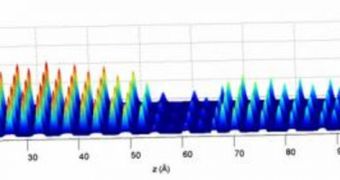A team of physicists from the University of Michigan (UM) announce the creation of the world's first atomic-scale map of the promising quantum dots, semiconductors whose excitons are confined in all three spatial dimensions. Quantum dots potentially have the ability to influence a large number of production processes, such as those for transistors, solar cells, LEDs, and diode lasers, and may also be used as agents in medical imaging and for constructing quantum bits (qubits) in the future.
The reason why the accomplishment is so important is because it opens the way to creating custom quantum dots, to be tailored and optimized to specific applications only. At this point, the same, generic type of QD is used in a wide array of electronics, which is not at all good, experts argue. In the latest experiments, the scientists looked to expand their knowledge on the semiconductor crystals, which all have ten to 50 atoms in diameter. By using a process called directed assembly, engineers have now gained the ability to control the position of single atoms inside the clusters, essentially controlling the QD's properties.
Although this process has been around for a while, progress using it has been slow, mostly because the lack of knowledge on the detailed structure of the clusters impeded any major accomplishments. This gap has now been filled by the new map supplied by the UM team. “I liken [the accomplishment] to exploration in the olden days. You find a new continent and initially all you see is the vague outline of something through the mist. Then you land on it and go into the interior and really map it out, square inch by square inch,” UM Professor of Physics Roy Clarke, also a corresponding author of the paper, explains.
“Researchers have been able to chart the outline of these quantum dots for quite a while. But this is the first time that anybody has been able to map them at the atomic level, to go in and see where the atoms are positioned, as well as their chemical composition. It's a very significant breakthrough,” he adds. Details of the map appear in the Sept 27 online issue of the scientific journal Nature Nanotechnology. “We're measuring the position and the chemical makeup of individual pieces of a quantum dot at a resolution of one-hundredth of a nanometer. So it's incredibly high resolution,” Clarke shares.
“Atomic-scale mapping provides information that is essential if you're going to have controlled fabrication of quantum dots. To make dots with a specific set of characteristics or a certain behavior, you have to know where everything is, so that you can place the atoms optimally. Knowing what you've got is the most important thing of all,” he concludes.

 14 DAY TRIAL //
14 DAY TRIAL //